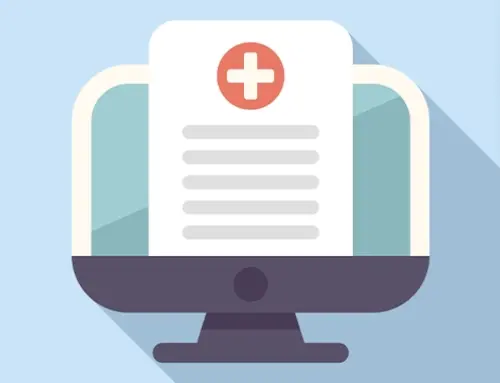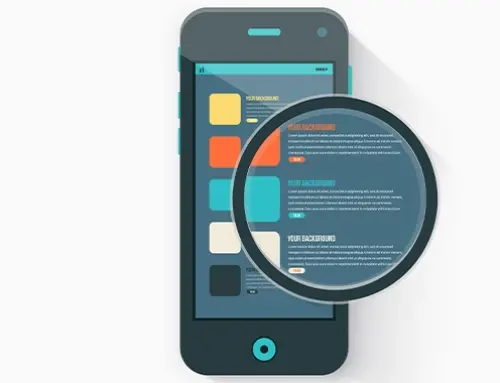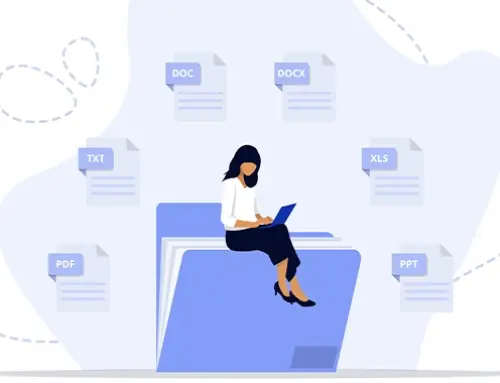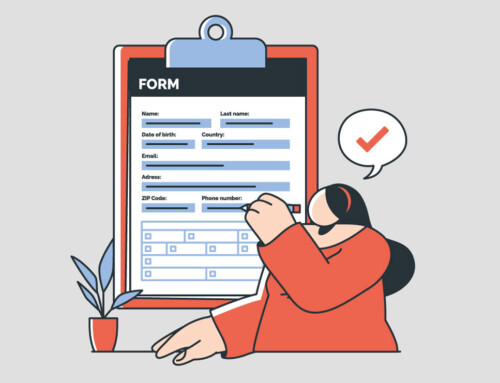Contents
In legal context, an action is referred to as gross negligence when a person behaves in a reckless way disregarding the safety or rights of others. In special cases like personal injury ones, gross negligence can bring about larger compensations for the plaintiff. Moreover, Gross negligence law can be sometimes hard to understand for law firms.
Understanding Gross Negligence
Gross negligence occurs when someone shows an extreme lack of care, going far beyond ordinary negligence. This type of recklessness is a significant factor in gross negligence law, especially in personal injury cases. While ordinary negligence involves failing to meet reasonable standards of care, gross negligence reflects a more serious disregard for the safety or well-being of others.
A. Negligence vs. Gross Negligence
The key difference between negligence and gross negligence lies in the degree of carelessness. Gross negligence shows a blatant failure to act responsibly, which is why it plays a crucial role in gross negligence law cases.
B. Importance in Personal Injury Law
In personal injury law, proving gross negligence can result in higher compensation through punitive damages. This makes gross negligence a critical element for lawyers seeking to maximize recovery for their clients.
Defining Gross Negligence
A. Legal Definition
Gross negligence is legally defined as an extreme lack of care that goes well beyond ordinary negligence. It occurs when a person’s actions reflect a reckless disregard for the safety or rights of others. In gross negligence law, this behavior is considered much more severe than a mere mistake or failure to exercise reasonable care. It is not enough to simply act carelessly gross negligence shows an almost intentional indifference to potential harm.
B. Difference Between Ordinary Negligence and Gross Negligence
The distinction between ordinary negligence and gross negligence lies in the severity of the actions. Ordinary negligence occurs when someone fails to meet the expected standard of care, such as forgetting to lock a door or not paying attention while driving. Gross negligence, however, involves a complete disregard for reasonable safety measures. For example, driving at high speeds through a crowded area would likely be classified under gross negligence law due to the extreme risk involved. Gross negligence shows a level of carelessness that courts recognize as far more dangerous and intentional than ordinary negligence.
C. Legal Criteria
To prove gross negligence in court, certain legal criteria must be met. First, the plaintiff must show that the defendant had a duty of care, meaning they were expected to act with reasonable caution. Second, the plaintiff must establish that this duty was breached in a way that reflects gross negligence—extreme recklessness or conscious disregard for safety. In gross negligence law, causation and damages must also be proven, meaning that the reckless actions directly caused harm to the plaintiff. Successfully proving gross negligence often leads to more severe penalties and potentially larger compensations than in cases of ordinary negligence.
Real-World Examples of Gross Negligence
A. Medical Malpractice
One of the clearest examples of gross negligence comes from medical malpractice cases. In a well-known case, a surgeon in California operated on a patient while under the influence of alcohol. The reckless decision not only jeopardized the patient’s life but also violated the standard of care expected in medical settings. Such extreme misconduct falls squarely under gross negligence law, where the surgeon’s actions showed a willful disregard for the patient’s safety. Law firms handling complex gross negligence cases like this can greatly benefit from using tools like RunSensible to organize case documents, manage expert testimonies, and track deadlines efficiently.
B. Automotive Accidents
Gross negligence is also prevalent in serious automotive accident cases. For instance, in a New York case, a driver sped through a pedestrian zone twice the legal limit, resulting in multiple injuries. This level of recklessness—driving far beyond the reasonable standard of care—led to a lawsuit grounded in gross negligence law. By proving that the driver ignored the obvious risks to others, the plaintiffs were able to seek punitive damages. In such cases, law firms need precise tracking of evidence and documentation, which can be managed seamlessly with RunSensible’s advanced legal software, helping attorneys stay on top of critical case details.
C. Workplace Safety Violations
Another real-world example involves workplace safety. In a tragic incident, a Texas employer ignored repeated warnings about malfunctioning machinery, which eventually led to a severe injury. This deliberate disregard for employee safety met the criteria for gross negligence, as the employer failed to act despite knowing the risks. Under gross negligence law, the injured worker was able to file a claim for substantial compensation. Law firms managing workplace injury claims involving gross negligence must juggle evidence from safety inspectors, witness statements, and medical reports. RunSensible’s document management system offers secure, organized storage to easily retrieve these documents during litigation.
D. Product Liability
Product liability cases also provide strong examples of gross negligence. In one case, a company knowingly sold defective car tires that were prone to blowouts, leading to multiple accidents. Despite being aware of the issue, the manufacturer continued selling the dangerous products without issuing a recall. This blatant disregard for consumer safety became a prime example of gross negligence law in action. Plaintiffs were able to prove the manufacturer’s reckless behavior, which resulted in punitive damages. Lawyers handling such high-stakes product liability cases can streamline evidence collection, client communication, and court filings with the help of RunSensible’s customizable case management tools.
By leveraging RunSensible’s comprehensive legal case management software, law firms can improve efficiency and organization in handling the complex details that arise in gross negligence cases, ensuring better outcomes for their clients.
Legal Implications for Personal Injury Cases
A. Potential for Punitive Damages
In personal injury cases involving gross negligence, the legal implications can be significant. One of the key outcomes is the potential for punitive damages, which go beyond standard compensation for medical bills and lost wages. Punitive damages are awarded to punish the defendant for their reckless actions and to deter similar behavior in the future. Under gross negligence law, plaintiffs are more likely to receive punitive damages because the defendant’s actions demonstrate an extreme disregard for safety. This can result in much higher financial awards compared to cases of ordinary negligence.
B. Impact on Statutes of Limitations
Gross negligence can also have a unique impact on statutes of limitations in personal injury cases. In some jurisdictions, the seriousness of gross negligence may allow plaintiffs to file a lawsuit even after the usual deadline has passed. This extension can happen because gross negligence law recognizes the severity of the defendant’s actions, offering more leeway for victims to seek justice. For law firms, understanding these legal nuances is critical in maximizing the chances of success for their clients, especially when the statute of limitations is a factor in gross negligence cases.
C. Challenges in Proving Gross Negligence
While gross negligence can lead to higher compensation, it is more challenging to prove in court. The burden of proof in gross negligence law is higher than for ordinary negligence, as plaintiffs must show that the defendant’s actions went far beyond simple carelessness. This often requires substantial evidence, expert testimony, and detailed documentation to demonstrate that the defendant acted with reckless disregard for others’ safety. For legal teams, managing the complexity of these cases is essential. From gathering evidence to coordinating expert witnesses, law firms need a robust system to handle the intricacies of gross negligence cases.
Strategies for Handling Gross Negligence Cases
A. Comprehensive Evidence Collection
One of the most critical strategies for handling gross negligence cases is thorough evidence collection. In such cases, the standard of proof is higher than for ordinary negligence, and lawyers must demonstrate that the defendant’s actions showed a reckless disregard for safety. To build a strong case under gross negligence law, attorneys need to gather all relevant documents, such as safety records, eyewitness accounts, and expert evaluations. Effective evidence management is crucial in gross negligence cases, and using tools like RunSensible allows law firms to organize, store, and access crucial documents securely and efficiently, ensuring no key details are overlooked.
B. Expert Witnesses
Another vital component in proving gross negligence is the use of expert witnesses. Since gross negligence cases often involve technical standards of care, such as medical practices or safety protocols, expert testimony can help clarify how the defendant’s actions fell far below acceptable levels. In gross negligence law, experts are frequently called upon to explain what a reasonable professional would have done in the same situation and how the defendant’s actions constituted extreme recklessness. Managing the coordination of expert witnesses, their reports, and their court appearances can be streamlined through RunSensible’s task tracking and communication tools, ensuring that no critical witness information is missed.
C. Effective Client Communication
Clear and timely client communication is essential when handling gross negligence cases. Clients need to understand the complexity of proving gross negligence law violations and the potential outcomes. Keeping clients informed about case progress, evidence collection, and legal strategy helps manage expectations and build trust. With RunSensible’s secure client communication portals, law firms can provide regular updates, share important documents, and maintain confidentiality, all while ensuring that clients remain fully engaged in their case.
By utilizing these strategies, law firms can increase their chances of success in complex gross negligence cases, while RunSensible offers the tools to manage each stage of the process effectively.
How RunSensible Enhances Case Management for Gross Negligence
A. Advanced Document Management
Handling cases of gross negligence requires meticulous organization, especially when managing vast amounts of evidence. RunSensible’s advanced document management system ensures that all documents related to a case—such as medical records, safety reports, and expert witness statements—are securely stored and easily accessible. In gross negligence law cases, where proving extreme recklessness often depends on detailed documentation, the ability to quickly retrieve and present critical evidence can make a significant difference in court. With RunSensible, law firms can organize case files by category and ensure that every piece of evidence is available at the moment it’s needed.
B. Task and Deadline Tracking
One of the most complex aspects of managing gross negligence cases is keeping track of important deadlines. Missing a filing date or a court appearance can severely impact a case, especially under the stringent requirements of gross negligence law. RunSensible’s task and deadline tracking feature helps law firms stay on top of these crucial dates by setting automated reminders for filing documents, meeting with clients, and preparing for court appearances. This automation ensures that nothing falls through the cracks, allowing legal teams to focus on building a strong case without the added stress of manual tracking.
C. Customizable Case Templates
In gross negligence cases, setting up a case efficiently from the beginning can save valuable time. RunSensible offers customizable case templates that help law firms streamline the setup of each case, incorporating the unique needs of gross negligence law right from the start. Whether dealing with medical malpractice, automotive accidents, or workplace safety violations, law firms can use these templates to ensure that all necessary steps are accounted for, making case management smoother and more efficient.
D. Secure Client Communication Portals
Confidentiality is paramount in cases involving gross negligence. Clients need to be kept informed about the progress of their case, but security concerns often arise when sharing sensitive information. RunSensible provides secure client communication portals, allowing law firms to send updates, share documents, and communicate directly with clients in a safe, encrypted environment. In gross negligence law cases, where sensitive details about injuries or professional conduct are involved, this feature helps maintain client trust and ensures that all communications are secure.
By using RunSensible’s features, law firms can streamline their management of gross negligence cases, enhance productivity, and provide better service to their clients, all while maintaining the highest standards of security and organization.
Case Study: Successful Gross Negligence Litigation with RunSensible
A. Background
In a recent case, a mid-sized law firm took on a complex gross negligence case involving medical malpractice. The case centered on a patient who suffered severe complications after a surgeon, known to have a history of substance abuse, performed an operation while under the influence. This blatant disregard for the patient’s safety was a textbook example of gross negligence law, and the legal team aimed to prove that the surgeon’s reckless actions warranted punitive damages. To manage the intricate details of the case, the firm relied heavily on RunSensible’s comprehensive legal management tools.
B. RunSensible’s Role
From the outset, RunSensible played a critical role in organizing the vast amount of evidence required to prove gross negligence. The firm used RunSensible’s advanced document management system to store medical records, expert witness statements, and internal hospital reports. In cases involving gross negligence law, where the burden of proof is higher, being able to quickly retrieve key documents during court proceedings is essential. Additionally, the firm utilized RunSensible’s task and deadline tracking feature to stay on top of filing deadlines and ensure that every court date was met without issue. This level of organization allowed the team to focus on building a strong case rather than managing administrative tasks.
C. Results
Thanks to the structured case management provided by RunSensible, the firm was able to successfully demonstrate gross negligence in court. The evidence they presented, including expert testimony facilitated by RunSensible’s tools, clearly showed that the surgeon’s actions were not just careless but recklessly dangerous. As a result, the jury awarded the plaintiff both compensatory and punitive damages, recognizing the severity of the defendant’s behavior under gross negligence law. The law firm also noted an improvement in client satisfaction, as RunSensible’s secure communication portals allowed for consistent, confidential updates throughout the litigation process.
By leveraging the power of RunSensible, the law firm not only won the case but also improved its overall case management efficiency, demonstrating how legal technology can be a game-changer in gross negligence litigation.
Mastering Gross Negligence Cases for Maximum Client Success
Understanding gross negligence and its legal implications is essential for any law firm handling personal injury or malpractice cases. The ability to differentiate between ordinary negligence and gross negligence law can directly influence the outcome, especially when pursuing punitive damages. Firms that excel in proving gross negligence are better positioned to secure favorable verdicts and maximize compensation for their clients. A strong grasp of the legal standards, paired with efficient case management, can make all the difference in these high-stakes cases.
Leveraging legal technology like RunSensible is a game-changer for managing the complexity of gross negligence cases. With features like secure document management, automated reminders, and customizable case templates, RunSensible allows law firms to focus on building strong legal strategies rather than getting bogged down in administrative tasks. By streamlining case management, law firms can boost productivity, improve client communication, and handle even the most complex gross negligence law cases with greater confidence.
Streamline your firm’s management of gross negligence cases with RunSensible’s powerful legal software. Try RunSensible today to enhance efficiency and boost client satisfaction.
FAQs
1. What is gross negligence?
Gross negligence refers to a severe lack of care where an individual shows reckless disregard for the safety or rights of others. It goes beyond ordinary negligence and can lead to higher damages in personal injury cases.
2. How does gross negligence differ from ordinary negligence?
While ordinary negligence involves failing to meet a reasonable standard of care, gross negligence shows an extreme lack of concern for the consequences of one’s actions. Gross negligence cases often result in harsher penalties and the potential for punitive damages.
3. How can law firms prove gross negligence in court?
To prove gross negligence, law firms must demonstrate that the defendant acted with reckless disregard for safety. This requires substantial evidence, expert testimony, and detailed documentation of the defendant’s actions or omissions.
4. How does RunSensible help in managing gross negligence cases?
RunSensible streamlines case management by offering secure document storage, task tracking, and customizable case templates. This helps law firms efficiently handle the complexities of gross negligence cases and stay organized throughout the legal process.
Disclaimer: The content provided on this blog is for informational purposes only and does not constitute legal, financial, or professional advice.








